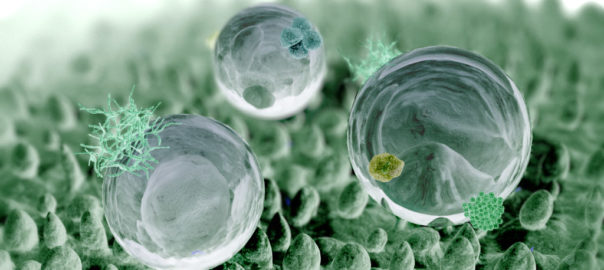Material Biologists Develop Smart Hydrogels

Hydrogels are materials that mimic the properties of biologic tissues. They are used in stem cell therapy and drug delivery. Conventional hydrogels are synthetic polymers or biomolecules that serve as passive frameworks for cells and molecules. Now, scientists at The Hong Kong University of Science and Technology have created “smart” hydrogels that are responsive to stimulation.
Dynamic Signalling
When used merely as passive scaffolds, hydrogels do not become involved in biological processes such as cell migration and cell proliferation. Material biologists are attempting to develop hydrogels that can be controlled by dynamic signaling mechanisms to enable them to more fully integrate with cellular and molecular processes.
Photo-Responsive Hydrogels
Hydrogels that respond to light are of special interest to material scientists for two reasons. The first is that light is a highly precise method of controlling cell behavior. The second is that light stimulation is a relatively noninvasive method of dynamic signaling.
Smart Hydrogel Architecture
The challenge for material biologists is to develop hydrogels that have a supramolecular architecture that is both functional and efficient. Hydrogels are complex globular proteins that provide a three-dimensional scaffold to support functional tissue. The architecture of smart hydrogels must, therefore, support processes such as cell migration and cell proliferation.
New Research on Hydrogels
The scientists in Hong Kong have developed a light-sensitive hydrogel that is responsive to B12. This hydrogel was created by linking together photoreceptor CarHC proteins which are responsive to stimuli. The assembly of these proteins into a hydrogel created a smart material with enormous implications in material biology.
References:
- https://phys.org/news/2017-07-photo-responsive-protein-hydrogels-agent-stem.html


